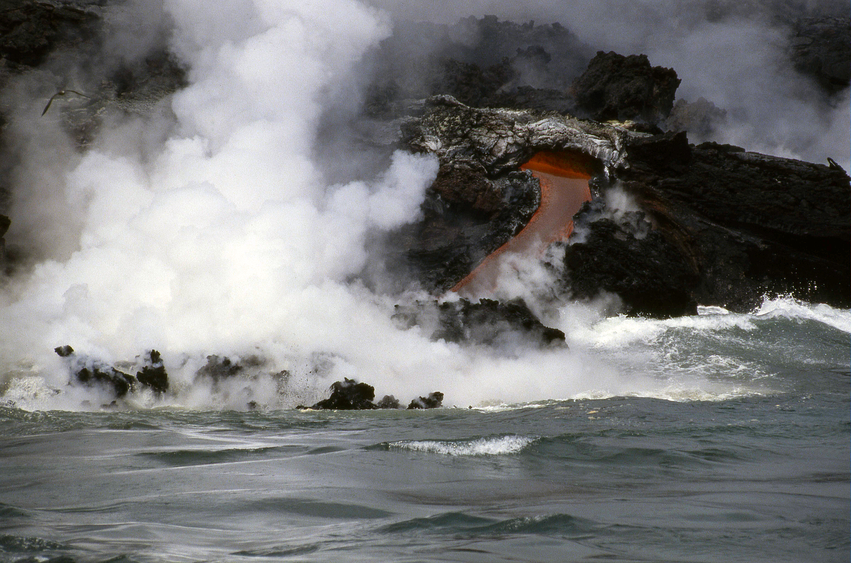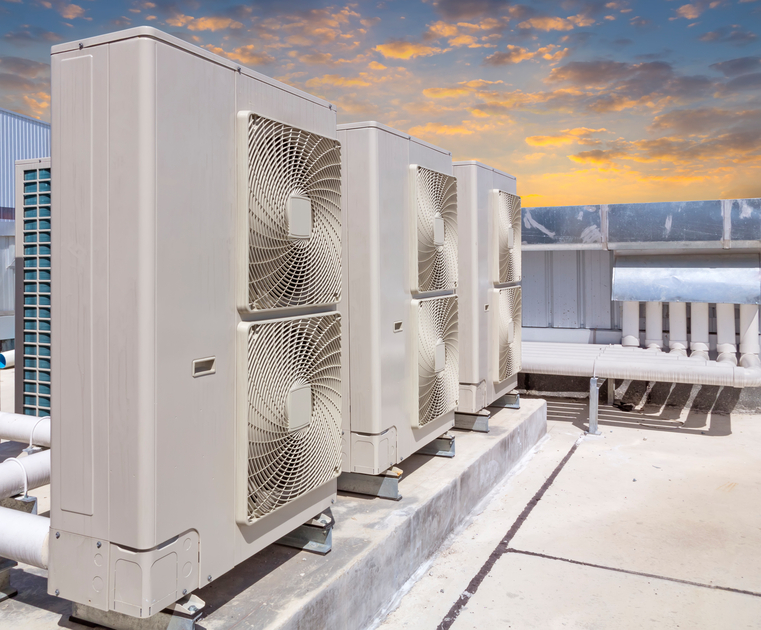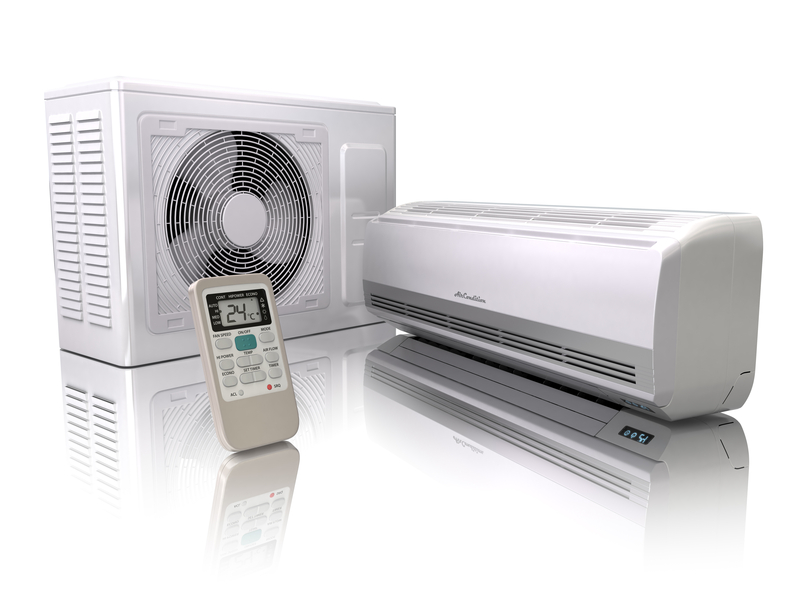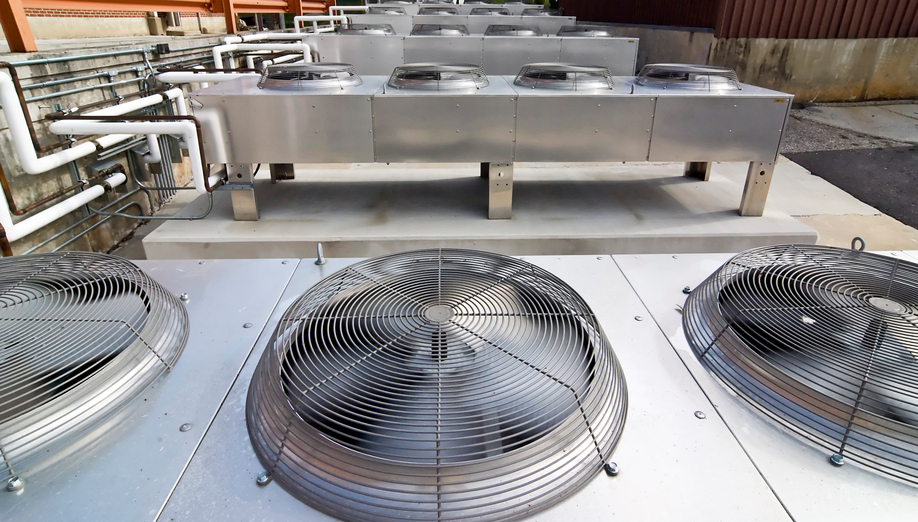Ontario HVAC 15 PDH Discount Package 1
Heating and Cooling System Upgrades (M03-022)
Air Conditioning Psychrometrics (M05-005)
Home Tightening, Insulation and Ventilation (M02-058)

This online engineering PDH course discusses the history of chilled water distribution systems and the development of "variable primary flow system". Problems such as low delta-T syndrome associated with the chilled water pumping schemes are defined and also discussed. Finally, this course compares the advantages and disadvantages of primary-secondary and direct-primary pumping schemes.
In large commercial and industrial systems, chilled water system serves as means to transfer heat from building spaces to the refrigeration system. Initially, when energy costs were low, constant volume and primary-secondary systems provided a stable and simple operation of the chillers and distribution systems. However, as energy costs increased, particularly in the late 1970s, the efficiency of the chillers and the costs associated with operating the distribution system became more important. As a result, the need for new schemes to improve chiller performance and reduce energy costs drove the HVAC industry to advance chilled water technology, particularly in the manner that chilled water is delivered.
This 5 PDH online course is applicable to mechanical and HVAC engineers, process engineers, architects, building designers, contractors, energy auditors, facility managers who are interested in gaining a better understanding of HVAC chilled water distribution schemes.
This P.Eng. continuing education course is intended to provide you with the following specific knowledge and skills:
- The basic hydronic principles i.e. relationship of chilled water flow rate v/s cooling load and the energy savings due to adjustable speed pumps
- How do constant volume chilled water systems different from primary/secondary arrangement
- What is low delta-T syndrome and how it affects the chiller loading
- What are the causes and mitigation measures to prevent low delta-T syndrome
- Why distributed pumping arrangement is better than headered arrangement for constant flow systems
- How do primary/secondary chilled water systems create hydraulically independent loops.
- How to size the de-coupler bridge
- The characteristics of control valves and why 2-way valve is better than 3-way valve in variable flow systems
- How do the variable primary flow system compare with primary/secondary system in terms of cost and energy
- The importance of design tube velocity and rate of chilled water flow variations in variable primary flow systems
In this professional engineering CEU course, you need to review the course document titled "HVAC Chilled Water Distribution Schemes".
Upon successful completion of the quiz, print your Certificate of Completion instantly. (Note: if you are paying by check or money order, you will be able to print it after we receive your payment.) For your convenience, we will also email it to you. Please note that you can log in to your account at any time to access and print your Certificate of Completion.

This online engineering PDH course identifies the opportunities for improving the performance of the heating and cooling system based on the type of system that is in place.
Heating and cooling systems are the largest single consumers of energy in buildings. These systems condition the air within a building so that occupants are comfortable. Heating and cooling systems consist mainly of chillers, boilers, cooling towers, and pumps. There are central heating and cooling systems, and unitary systems that combine heating and cooling. Opportunities exist for improvement to both central and unitary systems.
This 3 PDH online course is applicable to engineers, contractors, designers and other technical professionals who are involved in the retrofit of existing heating and cooling systems.
This P.Eng. continuing education course is intended to provide you with the following specific knowledge and skills:
- Understanding the best opportunities available for upgrading central cooling systems including chillers, cooling towers, water side economizers and pumps
- Understanding the best opportunities available for upgrading central heating systems including boilers and furnaces
- Understanding the best opportunities available for unitary systems including packaged or rooftop units, split system packaged units, air source heat pumps and water loop heat pump systems
- Learning about new strategies aimed at saving energy such as geothermal heat pumps, district cooling and heating, radiant heating and cooling, cool storage, high temperature difference distribution, evaporative cooling, and non-electric cooling
In this professional engineering CEU course, you need to review "Heating and Cooling System Upgrades" of the Energy Star Building Manual. (Energy Star is a joint program of the U.S. Environmental Protection Agency and the U.S. Department of Energy).
Upon successful completion of the quiz, print your Certificate of Completion instantly. (Note: if you are paying by check or money order, you will be able to print it after we receive your payment.) For your convenience, we will also email it to you. Please note that you can log in to your account at any time to access and print your Certificate of Completion.

This online engineering PDH course provides an overview of psychrometrics and suggests how a better understanding of psychrometrics will improve air conditioning design and selection of equipment.
Psychrometry is the study of moist air. It is significant in terms of thermal comfort and is a major consideration in design of air conditioning systems. Air conditioning engineers use the psychrometric chart to predict changes in the environment when the amount of heat and/or water in the air changes. A psychrometric chart provides a convenient way to look at the air conditioning processes and it will answer why heated air can hold more moisture, and conversely, how allowing moist air to cool will result in condensation.
This 5 PDH online course is applicable to students, mechanical and HVAC engineers, process engineers, architects, building designers, contractors, energy auditors, facility managers who are interested in gaining a better understanding of psychrometrics.
This P.Eng. continuing education course is intended to provide you with the following specific knowledge and skills:
- Understand the basic terminology and definitions related to air properties
- Read psychrometric chart
- Describe relationship of 7 air properties: DBT, WBT, RH, dew point, absolute humidity, enthalpy and specific volume
- Apply the psychrometric charts on air-conditioning applications
- Understand how the various properties of air are measured
- Understand various psychrometric processes: sensible heating and cooling, cooling and dehumidification, evaporative cooling, heating and humidification and air mixing
- Understand the air conditioning processes for 4 extreme climatic conditions viz. Miami, Phoenix, Minneapolis and Seattle
- Understand the difference between sensible heat and latent heat
- Understand the terms sensible heat factor, room sensible heat factor and grand sensible heat factor
- Understand how to calculate the required volume air flow rate
- Understand how to compute the cooling coil capacity with example
- Understand standard equations used in air conditioning
In this professional engineering CEU course, you need to review the course document titled, "Air Conditioning Psychometrics".
Upon successful completion of the quiz, print your Certificate of Completion instantly. (Note: if you are paying by check or money order, you will be able to print it after we receive your payment.) For your convenience, we will also email it to you. Please note that you can log in to your account at any time to access and print your Certificate of Completion.

This online engineering PDH course provides information on the inspection, control and management of air leaks and presents the proper insulation and ventilation processes that make your home more comfortable and energy efficient.
The average family spends around half of its annual household energy bill on heating and cooling. This significant number can be dramatically reduced by making some simple energy-saving weatherization and insulation improvements to your home.
Air leaks through the ceiling, walls, foundations and other areas are typically the greatest sources of heating and cooling losses in a home. Insulation slows down the heat flow through a building’s envelope. Proper ventilation protects your home from moisture damage during winter and reduces heat buildup during summer. So, controlling air leaks, having the appropriate insulation and proper ventilation help in extending the life of your home, conserve energy, save money and increase your home’s overall comfort.
This 2 PDH online course is applicable to HVAC and mechanical engineers who are interested in learning about controlling air leaks, understanding the proper insulation and ventilation processes in homes.
This P.Eng. continuing education course is intended to provide you with the following specific knowledge and skills:
- Familiarizing with major sources of air leaks in a typical home
- Learning about different sealing materials, their main characteristics and applications
- Learning about insulation and its role in creating an energy-saving thermal envelope for a home
- Understanding the main characteristics of the different types of insulating materials
- Understanding the important role of ventilation in protecting homes year-round
Upon successful completion of the quiz, print your Certificate of Completion instantly. (Note: if you are paying by check or money order, you will be able to print it after we receive your payment.) For your convenience, we will also email it to you. Please note that you can log in to your account at any time to access and print your Certificate of Completion.